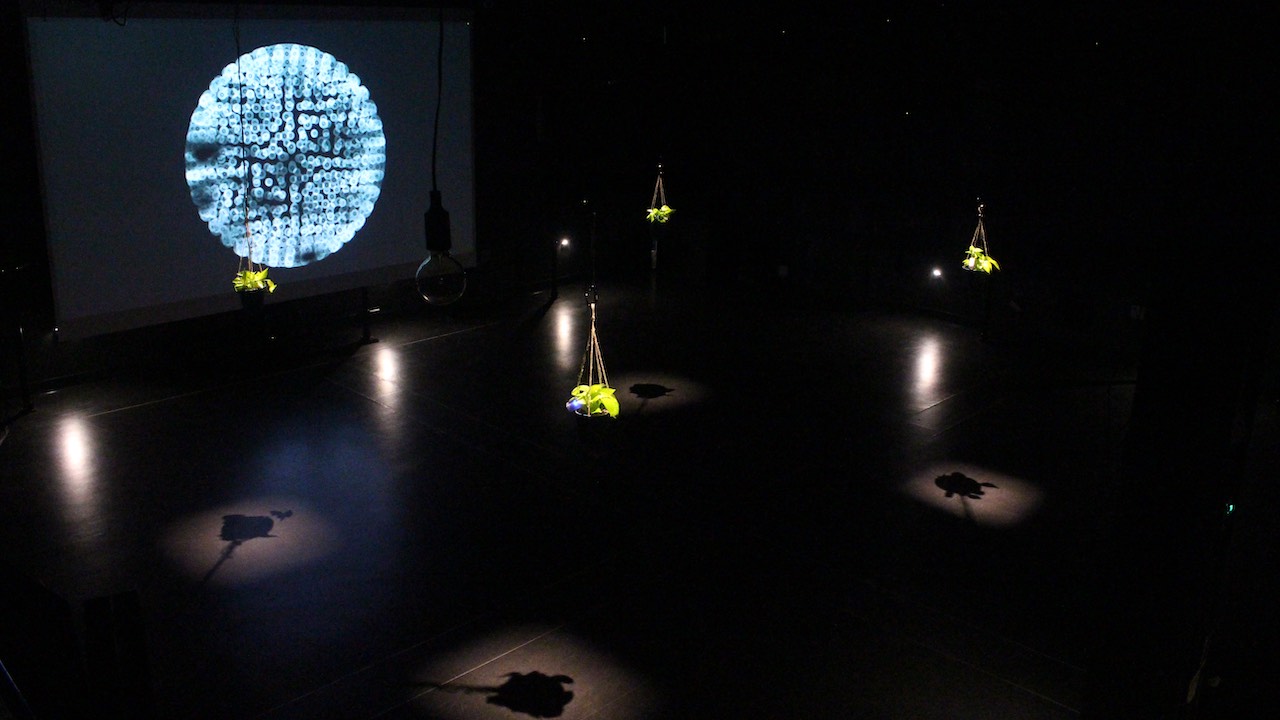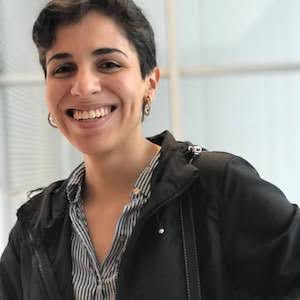Eloysa Zelada : Unnatural Nature
Unnatural Nature
Unnatural nature is a two-part immersive and interactive room-size installation that delves into the issue of climate change. The first part incorporates a sonification of climate change data, while the second part encourages participants to touch real interactive plants that control musical and visual events.
 Unnatural Nature is a multi-part installation that aims to raise awareness about the global issue of climate change through an immersive and interactive experience. The installation is comprised of two time-based distinct parts that are designed to seamlessly transition from one to the other, creating a cohesive and impactful experience for participants.
Unnatural Nature is a multi-part installation that aims to raise awareness about the global issue of climate change through an immersive and interactive experience. The installation is comprised of two time-based distinct parts that are designed to seamlessly transition from one to the other, creating a cohesive and impactful experience for participants. The first part of the installation is a sonification (i.e. data-driven sound/music) of four global climate datasets obtained from the NASA’s climate database, related to temperature change, CO2 concentration, Arctic and Antarctic ice sheet mass, and sea level variation that range from the year 1880 to 2022. The sonification is created using a range of synthesized sounds that model natural and abstract soundscapes seeking to represent the data trends and changes over time. By mapping the data to sound parameters, the sonification captures the essence of the climate change data in an accessible and intuitive way.
The sonification is spatialized using a 22-speaker third-order Ambisonic system, which encodes point sound source localization in three dimensions to surround the listeners with the movement of the sounds. However, it can be easily adapted to any configuration of multichannel speakers, making it possible to playback in eight, or at least four surround speaker configurations. This flexibility allows the installation to be easily adapted to different performance spaces and technical setups. The spatialization of the sonification is intended to increase immersion and transport the listener to the environment represented by the data and foster a deeper connection with the message conveyed.
The first part of the installation is accompanied by a data and audio-driven visual design projected on a full wall display and color lights. The visual design provides the participants with a year count up from 1880 to 2022 to guide them through the years and provide a reference as the data sets progress during the sonification. In addition, this visualization incorporates an abstract design that aims to represent the earth and its visual distortion through the years.
The second part of the installation is an invitation to reconnect with nature and the environment, inspiring collective participation, and hopefully inspiring positive action. In this part, participants are encouraged to interact with four live plants placed hanging in the room. These interactions are tracked through a system designed and built specifically for this installation which involves touch and inertial sensors placed in each plant to detect when the plants are touched or moved. This system transmits data wirelessly via Bluetooth to the computer in order to process all of the sensor data and trigger the different visual and sonic events.
Each plant is connected to a different sound source that is triggered and manipulated based on user interaction, and when all plants are being touched the sounds layer form a musical composition. By interacting with the plants, the participants also influence and control an abstract visualization which is presented through the full-wall display.
In addition, the installation implements lights that allow to generate distinct ambiences for each section. The first part incorporates lights that follow the color palette of the abstract visual design that accompanies the sonification, and when transitioning to the second part, these color lights gradually turn off and spotlights for each plant turn on to highlight the role of the plants in this second part and encouraging participants to interact with them.
The two parts of the installation are intended to be experienced in sequence, with a smooth transition between them achieved through both visual and sound cross-fading. The length of the entire installation can be easily adjusted based on the context in which it is being presented. It can range in duration from 10 minutes to 40 minutes and can be scheduled to start and end at specific times or set up to loop continuously from one part to the next, allowing participants to come and go as they experience the full installation.
Unnatural Nature's first public presentation occurred at the University of Michigan, Ann Arbor, USA, on April 8th, 2023.
This debut demonstrated the potential of the installation not only to successfully showcase the artistic, conceptual, and technical ideas behind it but also to engage and inspire viewers to reflect on the issue of climate change actively.
The University of Michigan Department of Performing Arts Technology integrates the study of music, engineering, and allied arts in a close-knit, collaborative environment. The inspiring and accomplished faculty are internationally renowned scholars, teachers, artists and practitioners.
Eloysa Zelada
: Media Artist and Composer

Ann Arbor, Michigan
I am a media artist, composer, and pianist exploring the intersection between music technology, sound art, media arts, performance, and ecology.
My work ranges from sound art installations, electroacoustic and experimental compositions, VR immersive experiences, and interactive environments and systems. In addition, I have worked doing sound and music for videos exploring poetic and reciprocal interactions of sound and image.
My work ranges from sound art installations, electroacoustic and experimental compositions, VR immersive experiences, and interactive environments and systems. In addition, I have worked doing sound and music for videos exploring poetic and reciprocal interactions of sound and image.
Connect with Eloysa Zelada
How you can help me:
Follow me on Instagram
Give me their feedback through my email
Follow me on Instagram
Give me their feedback through my email
Become a member to post comments or questions to this maker.
If you like this project, please make a small donation to the artist.
Here's a shareable link to this project: https://makermusicfestival.com/projectdirectory/unnatural-nature/
The information and media presented for this project was provided by its creator. The maker owns and has copyright on all materials submitted. The maker retains all intellectual property rights, including copyright, patents, and registered designs.